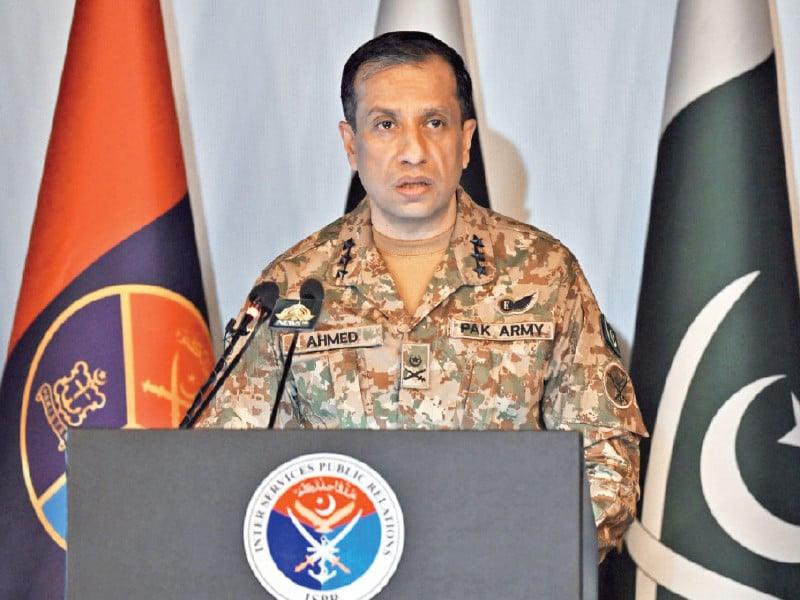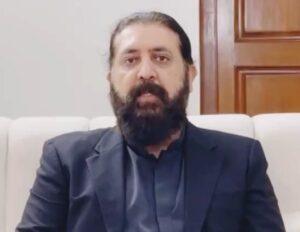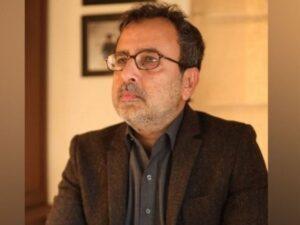During a press release on Sunday, Director-General of Inter-Services Public Relations (ISPR) described LT Gen Ahmed Sharif Chaudhry Pakistans ‘Operation Bunyan-Un-Marsoos’ against India as an extensive national reaction to Indian aggression and said the armed forces had fulfilled any promise to the nation.
“Operation Bunyan-Un-Marsoos has been a good example of the gathering of all elements of national power,” he said. “With the overwhelming support of the Pakistani public, we effectively counteracted a direct threat to our national sovereignty, integrity and our great motherland,” he added.
LT Gen Chaudhry reiterated that Pakistan -armed forces had committed three clear obligations at the start of the conflict: “We will give an appropriate answer to Indian aggression. This answer will come at some point, place and through methods of our own choice. And when we hit back, the whole world will know – it will not be something you need the Indian media to tell you.
He emphasized that this was not only intentional opinions, but goals that were fully realized. “That’s what we promised. We promised and delivered.”
He presented an overview of ‘Operation Bunyan-Un-Marsoos’, which was launched in return to what he called “creepy attack”, performed by Indian forces on the evening 6th and 7th, giving a comprehensive account of Pakistan’s military reaction to what he described as “unprovoked Indian aggression.”
“These attacks led to the tragic loss of innocent civilian lives, including women, children and the elderly,” he said. “Pakistan had promised justice and retaliation for the reprehensible Indian military aggression and brutal killing of our civilians,” he added.
In highlighting the military reaction, DG ISPR informed that Pakistan’s armed forces targeted 26 military installations in India, which were allegedly involved in attacks on Pakistani civilians and infrastructure.
“These included Indian Air Force and Army installations in Suratgarh, Sirsa, Adampur, Bhuj, Naliya, Bathinda, Barnala, Harwara, Avantipur, Srinagar, Jammu, Mamoon, Ambala, Outhadhant and Pathankot – all of which had a significant injury,” he said. He added that missile facilities used to launch Brahmos missiles to Pakistani territory were also neutralized.
He described Pakistan’s response as a “textbook demonstration” of joint military operations and emphasized the integration of all three military branches and advanced technologies. “It was activated by real-time situation awareness, network-centered warfare functions and trouble-free multi-domain operations,” he said.
He further highlighted the use of a wide range of modern weapons including precision -controlled long -term Fatah Missiles (F1 and F2), air -launched precision ammunition, long -distance immunition and advanced artillery systems.
Reinforcing Pakistan’s behavior During the operation, the military spokesman strongly confirmed that the armed forces did not target civilian populations. “We will never target civilians,” he said. “Our religion, culture and professionalism do not allow us to do so.” He added, “Even from Indian statements, did you find that Pakistan attacked anything other than military targets? No.”
Read: Trump to work with Pakistan, India to solve Kashmir -Tvist
DG ISPR further stated that Pakistan’s military retaliation was not only proportionate and conscious, but also designed to maintain the country’s strategic deterrence position. “No one should have any doubt,” he warned, “that every time our sovereignty is threatened, and our territorial integrity violated, the answer will be extensive, recurring and decisive,” he emphasized.
He revealed new aspects of Pakistan’s military strategy during ‘Operation Bunyan-Un-Marsoos’ against India and highlighted the country’s use of drones, cyber capacities and contemporary terrorist operations.
The briefing emphasized the rising technological sophistication of Pakistan’s military and its emergency preparedness to engage across multiple domains in response to developing regional threats. “India inserted drones not only for surveillance, but to scare civilians by spreading fear,” he said.
In response, he said, Pakistan demonstrated his own advanced drone capabilities. “Throughout” Operation Bunyan-Un-Marsoos “flew dozens of Pakistani armed drones across major Indian cities and political and high-value government, including the capital, New Delhi,” he revealed.
He said this maneuver was a deliberate show of strength. “From possessed Kashmir to Gujarat, we made it clear that Pakistan possesses deadly, long -lasting, unmanned capabilities and emphasized the utility of trying to dominate this domain.”
ALSO READ: Indian attack on Nur Khan Base made us intervention: new
DG ISPR further revealed that Pakistan launched a “comprehensive and effective cyber-offensive” that temporarily disturbed and deteriorated critically Indian infrastructure and communication networks. These systems, he said, actively supported India’s military operations during the conflict.
“Let me tell you that Pakistan -armed forces have a sufficient package of highly sophisticated, niche military technologies. What we used in this conflict was only a fraction of our capabilities -many do not remain revealed, reserved for future conditions,” he said.
Despite the exhibition of power, LT Gen Gen Chaudhry insisted that Pakistan’s actions were measured. “Compared to India’s merciless provocations, our response has been precise, proportionate and remarkably detained,” he said. He said Pakistan avoided civilian losses and strictly targeted units directly linked to hostile military acts against Pakistan.
Under the press mark, he also highlighted a simultaneous increase in militant violence over Pakistan. “When our forces engaged on the eastern front, we witnessed an abnormal and immediate increase in India-sponsored terrorism within our borders,” he said. “This clearly justifies Pakistan’s long -standing attitude that India is actively involved in evoking terrorism here.”
Despite these challenges, he claimed that Pakistan’s military maintained operational efficiency on both fronts. “Alongside ‘Operation Bunyan-Un-Marsoos’, our forces continued uninterrupted terrorist operations in the Western region and secured national security on all fronts.”
Read more: Pakistan observes ‘Yom-E-Taskur’ to celebrate ‘Operation Bunyan-Un-Marsoos’ success
When he paid tribute to those who lost their lives, LT Gen offered chaudhry beans for the rapid improvement of the wounded and praised efforts of Pakistan’s armed forces. “We are expanding our heartfelt gratitude to every officer, soldier, airman and sailor of the armed forces in Pakistan, which made the success of this battlefield possible through their courage, professionalism and victims,” he said.
He praised the Pakistani people’s resilience during the crisis and said: “The moral strength, unity and prayers of the nation were a power multiplicator for our armed forces.”
In particular, he welcomes the youth in Pakistan, whom he described as the “front-line soldiers” in the information and cyber domains, counteracted incorrect information and defended national interests online. He also thanked the Pakistani media for acting as a “steel wall” against hostile tales.
When he acknowledged the role of civilian leadership, he praised the country’s politicians for their support and praised Prime Minister Shehbaz Sharif for making “fate-changing decisions” during the conflict.
Earlier on Saturday, India conducted air strikes at three Pakistan Air Force (PAF) bases – Nur Khan, Murid and Shorkot. In response, Pakistan launched the military operation of a retirement named ‘Bunyan-Un-Marsoos’ against Indian aggression. Following US President Donald Trump’s intervention to step down tensions between the two nuclear armed states, a ceasefire was reached.



